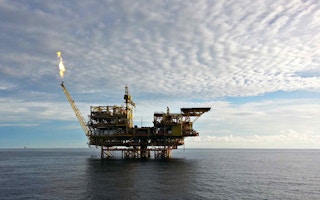Billions of gallons of oil and huge quantities of gas, already discovered and which companies were about to extract, are currently being left unexploited because of the plunge in oil prices.
Since the oil price began to drop in 2014, 68 major schemes that were awaiting the go-head have been deferred until the price of oil picks up again to at least US$60 a barrel, roughly twice the current world price.
While this is bad news for jobs in the oil industry and dividends to shareholders, it is heartening for environmental campaigners and governments anxious to stop the world overheating.
In December’s Paris Agreement governments said they hoped to hold the rise in global average temperatures to 1.5°C over pre-industrial levels. To succeed in that aim, almost all these oil and gas finds will have to stay in the ground permanently.
According to the research and consultancy firm Wood MacKenzie, total capital expenditure of $380 bn had been deferred in the 18 months up to the end of 2015 because of the oil price drop.
Downbeat outlook
The combined schemes affected were planned to extract new reserves equivalent to 27 bn barrels of oil over several years. The start dates of many of the proposed wells have now been put back to 2017 or later.
As a result the 2016 outlook continues to be gloomy for the industry, with hydrocarbon companies expected to cut back on exploration and extraction expenditure by another 16 per cent in the next 12 months, according to the analysts.
These decisions to cut back further were made before the agreement earlier this month to end sanctions against Iran, allowing its vast reserves to be sold on the open market again. This will increase the oil surplus and push prices down further, something which is certain to defer longer investment decisions about new fields.
Quoted in the Oil & Gas Journal Angus Rodger, Wood Mackenzie’s principal analyst for upstream research, said: “What began in late 2014 as a haircut to discretionary spend on exploration and pre-development projects has become a full surgical operation to cut out all non-essential operational and capital expenditure.”
Competition for capital
The survey showed that it was the most expensive deep-water projects for both oil and gas that suffered most from the deferrals. This is good news for Arctic regions and other sensitive environments where oil spills could be hard to clean up.
Tom Ellacott, vice-president of corporate analysis at Wood Mackenzie, predicted that there would be strong competition for the capital needed to exploit new fields. He felt that if oil could not be extracted at $60 a barrel or less, then the fields could be abandoned.
Countries named by the report with the largest inventory of delayed oil projects are Canada, Angola, Kazakhstan, Nigeria, Norway and the US, which together hold 90 per cent of all deferred liquids reserves. This includes oil sands, onshore, shallow-water and deep-water assets, both in new fields and in extra recovery from existing wells.
The largest gas projects delayed were in Mozambique, Australia, Malaysia and Indonesia, which in combination hold 85 per cent of the total volume of deferred reserves. Most of this gas, the report said, was in deep-water offshore fields and needed complex and expensive development.










